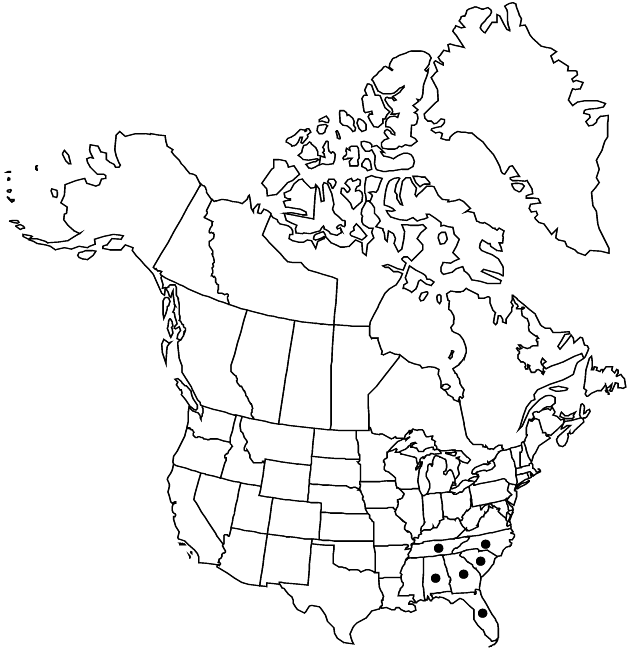Difference between revisions of "Silphium asteriscus var. dentatum"
Fl. South. U.S., 221. 1860.
Basionym: Silphium dentatum Elliott
Synonyms: Silphium asteriscus var. angustatum A. Gray Silphium elliottii Greene Silphium incisum Small Silphium nodum unknown
Treatment appears in FNA Volume 21. Treatment on page 82.
FNA>Volume Importer |
FNA>Volume Importer |
||
| Line 14: | Line 14: | ||
|name=Silphium asteriscus var. angustatum | |name=Silphium asteriscus var. angustatum | ||
|authority=A. Gray | |authority=A. Gray | ||
| − | }}{{Treatment/ID/Synonym | + | }} {{Treatment/ID/Synonym |
|name=Silphium elliottii | |name=Silphium elliottii | ||
|authority=Greene | |authority=Greene | ||
| − | }}{{Treatment/ID/Synonym | + | }} {{Treatment/ID/Synonym |
|name=Silphium incisum | |name=Silphium incisum | ||
|authority=Small | |authority=Small | ||
| − | }}{{Treatment/ID/Synonym | + | }} {{Treatment/ID/Synonym |
|name=Silphium nodum | |name=Silphium nodum | ||
|authority=unknown | |authority=unknown | ||
| Line 62: | Line 62: | ||
|publication year=1860 | |publication year=1860 | ||
|special status= | |special status= | ||
| − | |source xml=https://jpend@bitbucket.org/aafc-mbb/fna-data-curation.git/src/ | + | |source xml=https://jpend@bitbucket.org/aafc-mbb/fna-data-curation.git/src/8f726806613d60c220dc4493de13607dd3150896/coarse_grained_fna_xml/V19-20-21/V21_192.xml |
|tribe=Asteraceae tribe Heliantheae | |tribe=Asteraceae tribe Heliantheae | ||
|subtribe=Asteraceae (tribe Heliantheae) subtribe Ecliptinae | |subtribe=Asteraceae (tribe Heliantheae) subtribe Ecliptinae | ||
Revision as of 15:32, 18 September 2019
Plants 50–150 cm. Leaves: basal caducous; cauline opposite or alternate; faces hirsute, hispid, or scabrous. Paleae puberulent. Ray florets 8–13. Disc florets 35–120. 2n = 14.
Phenology: Flowering summer.
Habitat: Meadows, open forests, along roadsides
Elevation: 0–1000 m
Distribution

Ala., Fla., Ga., N.C., S.C., Tenn.
Discussion
Varieties dentatum and angustatum are variable in the character of stem vestiture, have overlapping geographic ranges, and therefore are best treated as one variety.
Selected References
None.
Lower Taxa
None.